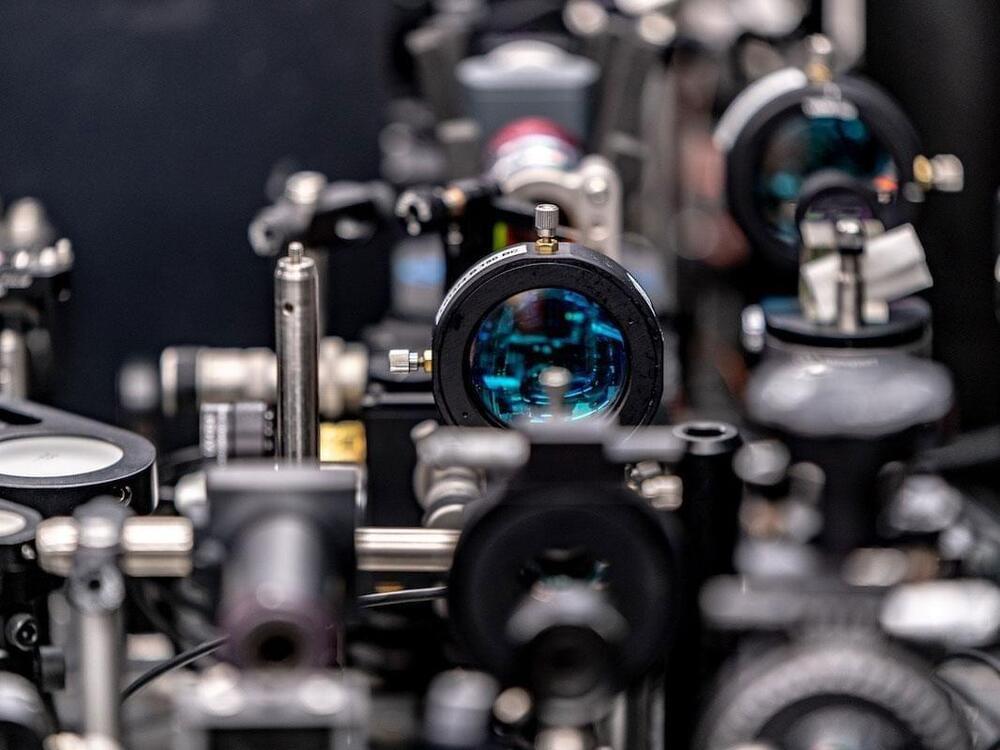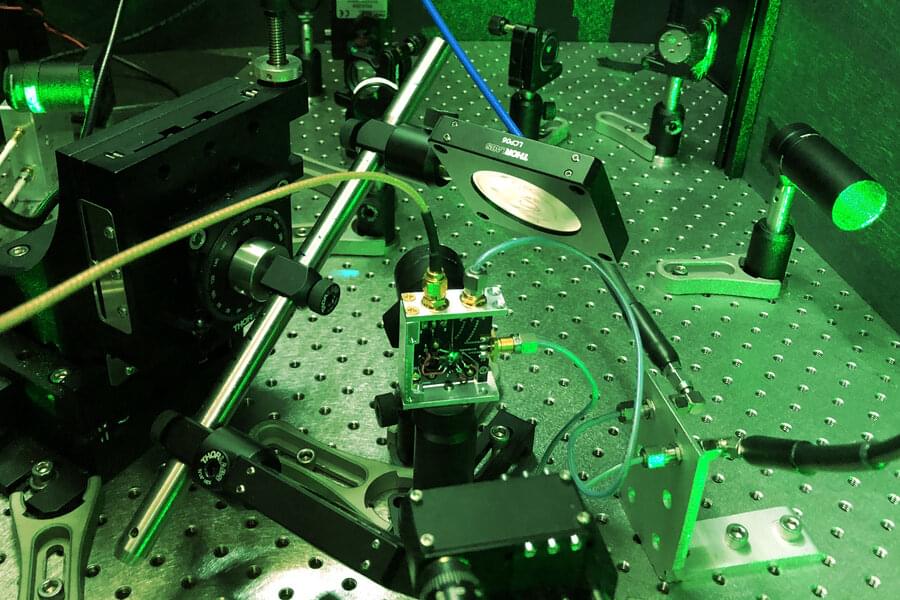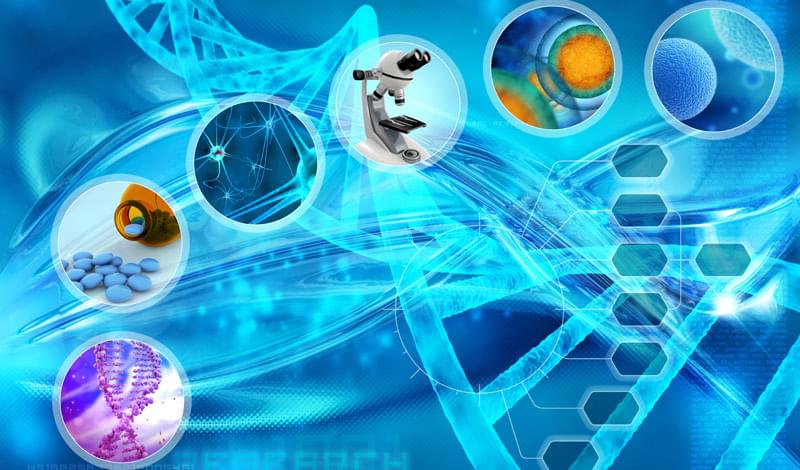Scientists made the startling discovery by plugging radio wave observations into a brand-new computer model.




‘Optical Accelerators’ ditch electricity, favoring light as an exchange medium.
Researchers with IBM and Moscow’s Skolkovo Institute have developed “optical accelerators” — optical switches that use light instead of electricity to convey state changes and transmit information. The inventors claim an up to 1,000x speedup compared to traditional transistor-based switches — and there are applications for both classical and quantum computing.

Physicists and engineers have long been interested in creating new forms of matter, those not typically found in nature. Such materials might find use someday in, for example, novel computer chips. Beyond applications, they also reveal elusive insights about the fundamental workings of the universe. Recent work at MIT both created and characterized new quantum systems demonstrating dynamical symmetry—particular kinds of behavior that repeat periodically, like a shape folded and reflected through time.
“There are two problems we needed to solve,” says Changhao Li, a graduate student in the lab of Paola Cappellaro, a professor of nuclear science and engineering. Li published the work recently in Physical Review Letters, together with Cappellaro and fellow graduate student Guoqing Wang. “The first problem was that we needed to engineer such a system. And second, how do we characterize it? How do we observe this symmetry?”
Concretely, the quantum system consisted of a diamond crystal about a millimeter across. The crystal contains many imperfections caused by a nitrogen atom next to a gap in the lattice—a so-called nitrogen-vacancy center. Just like an electron, each center has a quantum property called a spin, with two discrete energy levels. Because the system is a quantum system, the spins can be found not only in one of the levels, but also in a combination of both energy levels, like Schrodinger’s theoretical cat, which can be both alive and dead at the same time.
And they say it’s the world’s fastest.
It appears a quantum computer rivalry is growing between the U.S. and China.
Physicists in China claim they’ve constructed two quantum computers with performance speeds that outrival competitors in the U.S., debuting a superconducting machine, in addition to an even speedier one that uses light photons to obtain unprecedented results, according to a recent study published in the peer-reviewed journals Physical Review Letters and Scienc… See More.

The general index is a collection of 100+ million scientific papers that can be downloaded in 38 Terabytes. It is structured and can be searched via code.
There’s a vast amount of research out there, with the volume growing rapidly with each passing day. But there’s a problem.
Not only is a lot of the existing literature hidden behind a paywall, but it can also be difficult to parse and make sense of in a comprehensive, logical way. What’s really needed is a super-smart version of Google just for academic papers.
Enter the General Index, a new database of some 107.2 million journal articles, totaling 38 terabytes of data in its uncompressed form. It spans more than 355 billion rows of text, each featuring a key word or phrase plucked from a published paper.


This work expands the repertoire of DNA-based recording techniques by developing a novel DNA synthesis-based system that can record temporal environmental signals into DNA with minutes resolution. Employing DNA as a high-density data storage medium has paved the way for next-generation digital storage and biosensing technologies. However, the multipart architecture of current DNA-based recording techniques renders them inherently slow and incapable of recording fluctuating signals with sub-hour frequencies. To address this limitation, we developed a simplified system employing a single enzyme, terminal deoxynucleotidyl transferase (TdT), to transduce environmental signals into DNA. TdT adds nucleotides to the 3’ ends of single-stranded DNA (ssDNA) in a template-independent manner, selecting bases according to inherent preferences and environmental conditions.

“The Rejuvenome Project was launched to target these bottlenecks,” said Nicholas Schaum, PhD, Scientific Director at the Astera Institute. “We hope to do that by characterising treatments and regimens, both established and newly invented, for which we have reason to believe improve health and longevity.”
Previously, Schaum worked as a researcher at Stanford University, California, in conjunction with the Chan Zuckerberg BioHub. He organised dozens of labs and hundreds of researchers into a consortium that produced cell atlases, to characterise aging tissues in mice. These cell atlases became the foundation for Schaum’s further studies into whole-organ aging and single-cell parabiosis.
The Rejuvenome Project is expected to be complete in 2028. All wet lab operations will be centred at Buck, while the dry lab computational aspects will reside at the Astera Institute.

Facebook has just announced it’s going to hire 10,000 people in Europe to develop the “metaverse”.
This is a concept which is being talked up by some as the future of the internet. But what exactly is it?
**What is the metaverse?
**
To the outsider, it may look like a souped-up version of Virtual Reality (VR) — but some people think the metaverse could be the future of the internet.
In fact, the belief is that it could be to VR what the modern smartphone is to the first clunky mobile phones of the 1980s.
Instead of being on a computer, in the metaverse you might use a headset to enter a virtual world connecting all sorts of digital environments.
Unlike current VR, which is mostly used for gaming, this virtual world could be used for practically anything — work, play, concerts, cinema trips — or just hanging out.
Most people envision that you would have a 3D avatar — a representation of yourself — as you use it.